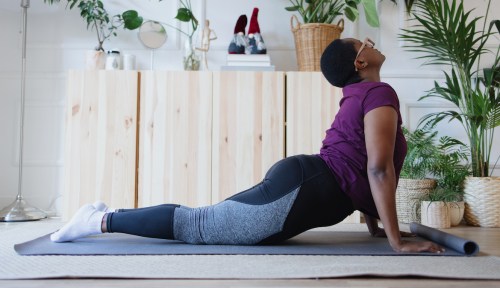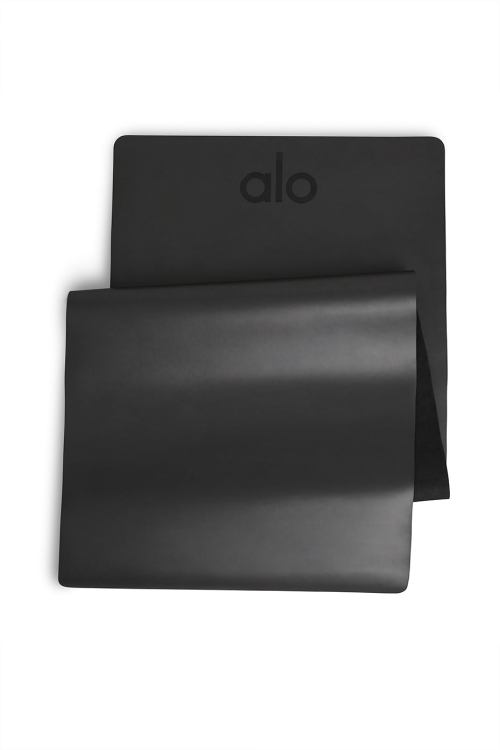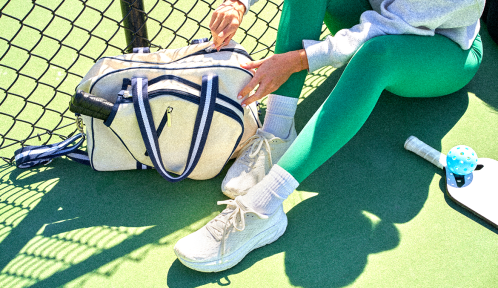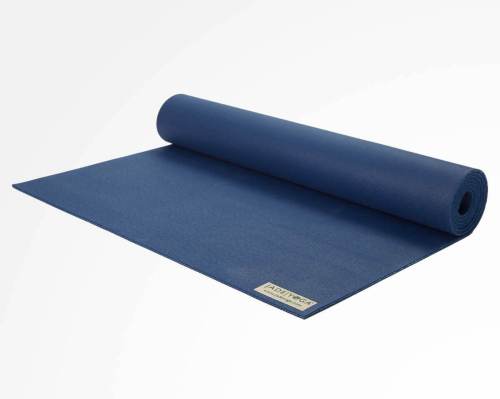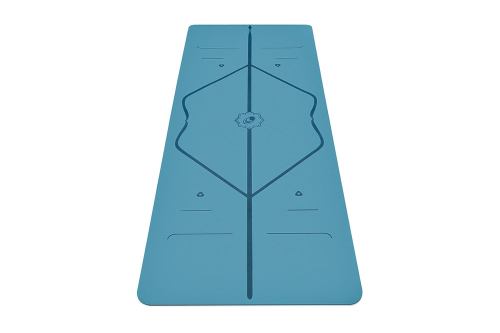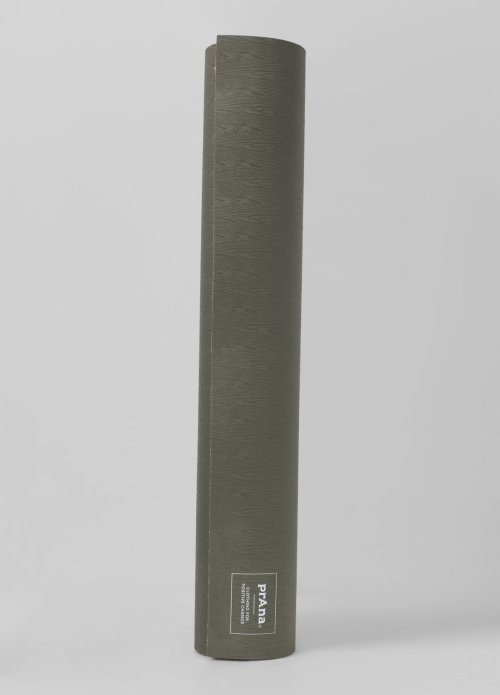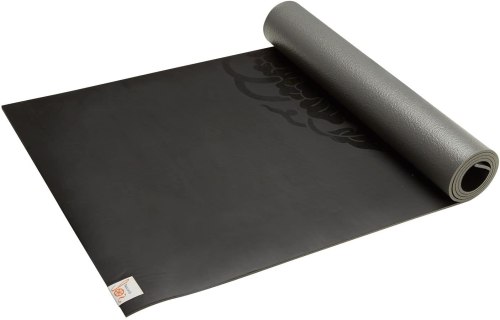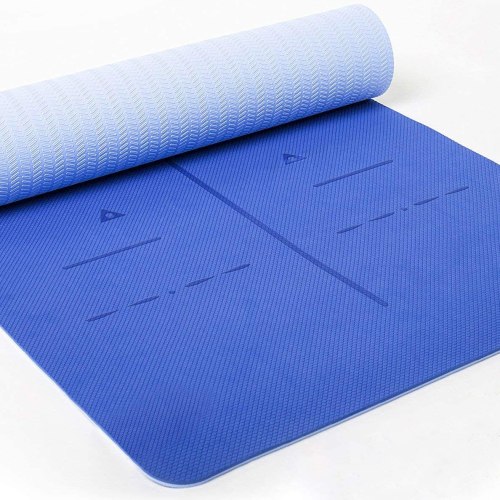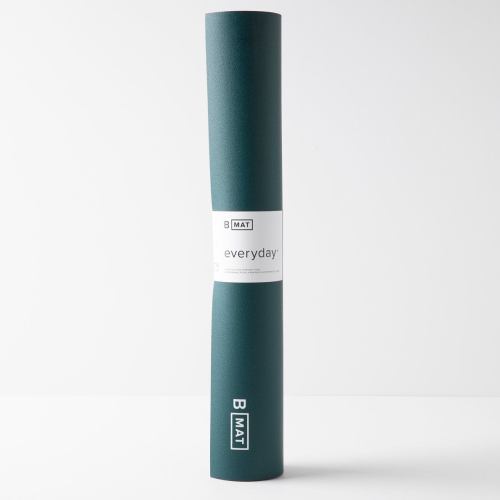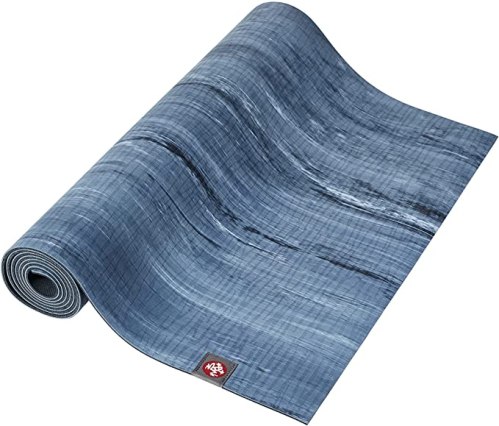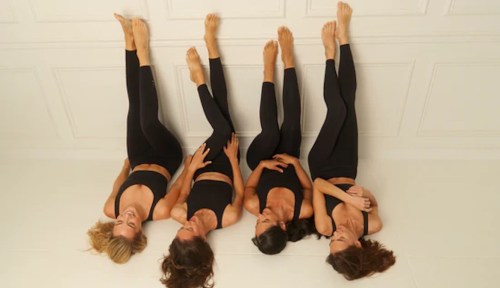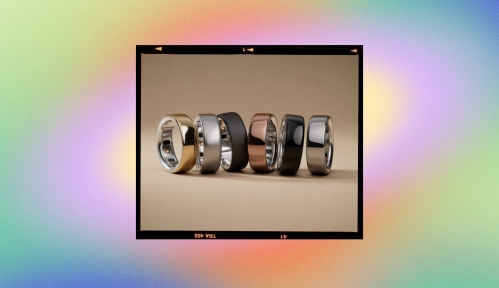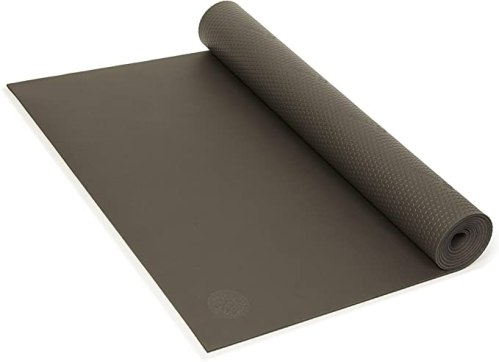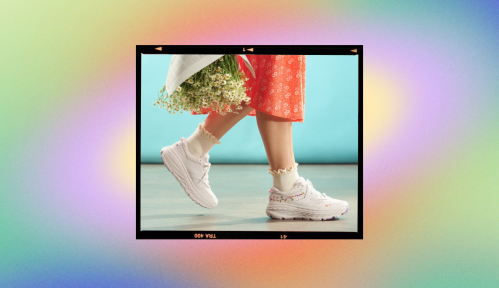Our editors independently select these products. Making a purchase through our links may earn Well+Good a commission
A good yoga session can do wonders for both your body and mind, and having the right gear—from a great pair of leggings to the right type of mat—can set the right tone for your entire session. We’re not just talking about any type of mat, though. A non-slip yoga mat is especially important for providing safe support, whether you’re doing yin yoga, are using your mat for aerobic exercise, or have sweaty hands. After all, you’re already concentrating hard enough on balancing your weight on some (or all) of your hands and feet, and the last thing you need to worry about is one of them slipping and sliding out from under you.
Experts in This Article
New Jersey-based yoga instructor
co-founder and owner of Urban Souls Yoga
yoga instructor and founder of JustBriFree
lead trainer and founder at Yoga Kawa
yoga instructor, meditation expert, and founder of TheYogaNomads
registered yoga teacher and certified Pilates instructor
vice president of training and experience at YogaSix
yoga teacher, self-love advocate, and founder of Love Revolution Yoga
yoga teacher at Studio Three
certified yoga instructor and mindfulness mentor
Read ahead for what things to look for when shopping for a non-slip yoga mat, as well as some yoga instructor-approved recommendations that will help keep you grounded during your next session.
Best non-slip yoga mats at a glance
- Best lightweight: Manduka PROlite Yoga Mat ($103.67)
- Best cushion: Manduka PRO Yoga Mat ($137.59)
- Best latex-free: Gaiam Insta-Grip Yoga Mat ($39.49)
- Best travel-friendly: Alo Air Mat ($98)
- Best reversible: Lululemon The Mat ($98)
- Best real rubber: Jade Yoga Harmony Mat ($84.95)
- Best for alignment: Liforme Yoga Mat ($140)
- Best sustainable: prAna Verde Large Yoga Mat ($110)
- Best small mat: Gaiam Dry-Grip Yoga Mat ($69.95)
- Best eco-friendly: Healthyoga’s Eco-friendly Non-slip Yoga Mat ($39.99)
- Best antimicrobial: B Mat Yoga Mat ($96)
- Best textured surface: Manduka eKO Yoga Mat ($100)
- Best dry-wicking: Alo Warrior Mat ($128)
- Best cork: Matify The Cork Balance Yoga Mat ($129)
- Best for hot yoga: Manduka GRP Hot Yoga Mat ($134)
How do I keep my yoga mat from slipping on the floor?
When practicing yoga, Brendan Gibbons, the co-founder and owner of Urban Souls Yoga, says using a non-slip mat is extremely important. “Not only is it super frustrating for your hands and feet to slide away from each other in a downward facing dog, but it can be dangerous, as those little sudden slips when you are holding a pose can cause injury,” Gibbons explains. Additionally, a slippery yoga mat takes away from your overall experience and can actually be hard on the nervous system, since worrying about slipping can prevent you from feeling calm. “The right yoga mat will help you limit potential injury, feel at ease, and practice the way you want with confidence.”
To prevent your yoga mat from slipping, Karina Blackwood, a registered yoga teacher and certified Pilates instructor, says it starts with investing in the right yoga mat. “Look for a yoga mat that has a non-slip surface or is specifically designed to provide good grip,” she explains, noting that mats made of natural rubber or those with textured surfaces tend to offer better traction.
In addition to choosing the best non-slip yoga mat, Blackwood says cleaning your mat regularly can help maintain its grip. “Sweat, dust, and oils from your skin can accumulate on the mat, making it more slippery,” she explains. “Clean your yoga mat regularly with a mild soap or a mat cleaner specifically designed for this purpose.”
Some other ways you can prevent slipping while practicing yoga include avoiding the use of lotions and oils before a class, using a yoga towel to absorb sweat, and practicing on a non-slip surface such as grass, carpet.
What’s the benefit of a non-slip yoga mat?
Non-slip yoga mats have many advantages, the main one being safety. “As our bodies perspire throughout a yoga or workout class, non-slip mats tend to be more durable, supportive on the joints, and grounding,” says Kimberly Ecker, a yoga flow instructor at Studio Three. Regardless if you’re a beginner or a yoga expert, having a non-slip mat can help you “become more in-tune and confident with the mental and physical practice, more in tune and confident with the mental and physical practice, especially in balancing poses that are held for longer periods of time,” she says.
Having a grippy surface is important whether or not your practice is heated. “A slip of the hand in Downward Dog, or the foot in Warrior II, could result in injury, so it’s important for that foundation to be secure,” says Kimberlee Morrison, a yoga teacher, self-love advocate, and founder of Love Revolution Yoga, and that includes your mat. “You want to feel confident your foundation can support your practice and that your hands and feet stay where they’re supposed to be until you move them intentionally.”
What to look for in a non-slip yoga mat
When looking for a non-slip yoga mat, there are a few things to consider:
Material
Non-slip yoga mats can be made with a variety materials such as PVC, natural rubber (this may not be best for people with latex allergies), TPE (a rubber-like material), cork, and more. Rubber mats also tend to be heavier, as rubber is denser than some plastic or fabric mats, says Bri Hamlet, a registered yoga instructor.
Texture
Look at the product description to make sure it’s “non-slip.” Hamlet recommends looking for a mat that’s made with textured rubber, as a very smooth mat won’t provide the same non-slip effect. Morrison also says she looks for mats that have a textured, tacky, or rubberized surface. “You also want to feel the surface with your hand if possible so you can rub it and test its grip at least a little before making your purchase.”
Thickness
Mat thickness is a matter of personal preference. Thicker mats provide more cushion while thinner mats provide more stability (as you’re closer to the ground), says Michelle Smith, a certified yoga instructor and mindfulness mentor.
Style
Ecker recommends treating your mat like a “home” of sorts and select a color/pattern that you feel will motivate personal and physical growth and is not just a “sweat sponge.”
In addition, just like with any new workout gear or shoes, Ecker says you’ll need to break in a mat a few times before your body adjusts, which is also influenced by varying body types. And regardless of what kind of mat you choose, make sure you clean it regularly to prevent layers of bacteria from building, which can contribute to a slippery surface (and is just kind of gross). With all of the above factors in mind, here are the best non-slip yoga mats recommended by yoga instructors.
The best non-slip yoga mats
Best Lightweight: Manduka PROlite Yoga Mat — $100.67
Lightweight at just 4 pounds in weight, this Manduka mat is great when you want to travel light but still want something supportive. It’s densely cushioned at 4.7mm thick, has closed-cell technology material that wicks sweat and moisture, and it’s easy to wipe down and clean. Kelly Clifton Turner, ERYT-500 and vice president of training and experience for YogaSix uses this mat, which she says is a worthwhile investment. “I’ve had it now for over 10 years, and it’s still in perfect shape. It’s non-slip and more supportive on my joints if I’m practicing somewhere with hardwood or tile floors,” she says.
Pros:
- It’s lightweight.
- It wicks sweat and moisture.
- It lasts a long time.
Cons:
- It costs over $100.
Best Cushion: Manduka PRO Yoga Mat — $137.59
Similar to the PROLite, the Manduka PRO mat is made with a durable PVC that seals out moisture and bacteria. It has 6mm of cushion for extra comfort. Plus, a dot pattern holds the mat in place, and a texture top layer allows you to grip (but not stick) in between poses. Ecker adds that the mat is OEKO-TEX certified to prevent chemical absorption and are the perfect balance of comfort and support. Ecker says you can also try a Manduka yoga towel, which is designed for wet grip.
Pros:
- It seals out moisture and bacteria.
- It has 6mm of cushion.
- It features a textured surface.
Cons:
- It’s expensive.
Best Latex-Free: Gaiam Insta-Grip Yoga Mat — $39.49
Another favorite of Ecker is Gaiam’s Premium Insta-Grip Mat, which is also latex-free (a good option for anyone who is allergic). It’s cushioned, 6mm thick, and has a sticky non-slip surface to help you hold any of those more challenging poses more confidently.
Pros:
- It’s hypoallergenic.
- It’s 6mm thick for extra cushion.
- It features a non-slip surface.
Cons:
- We don’t love the color options.
Best Travel-Friendly: Alo Air Mat — $98.00
This non-slip mat by Alo is only 3.5 pounds, making it great for on-the-go or travel, says Ecker. It’s made of natural rubber, anti-odor, and has a dry-wicking surface. And it’s a sleek black matte that goes with any outfit.
Pros:
- It weighs only 3.5 pounds.
- It has a dry-wicking surface.
- It’s constructed from natural rubber.
Cons:
- It has a thin construction.
- It’s expensive for a travel mat.
Best Reversible: lululemon The Mat — $98.00
It’s easy to see why lululemon’s mat is a favorite of many yoga instructors—it’s sustainably sourced, reversible, and antimicrobial. Michelle Smith, a certified yoga instructor and mindfulness mentor, says this mat has a slick look and feel, and “the smooth top has an amazing, supportive grip.”
Kimberlee Morrison, a yoga teacher, self-love advocate, and founder of Love Revolution Yoga, says after over a decade of teaching and practicing in hot yoga studios, the lululemon mat is her favorite. “It’s designed to soak up sweat and be even more ‘sticky.’ I’ve sweat puddles on my mat and still didn’t slip in my Downward Dog. Sometimes I’ll even wipe my sweat with my hand, put it back down and I’ll feel more secure in the pose,” she says.
Pros:
- It’s basically two yoga mats in one.
- It has antimicrobial properties.
- It soaks up sweat.
Cons:
- It’s pricey.
Best Real Rubber: Jade Yoga Harmony Mat — $84.95
Alexandra Plante, 500 HR RYT, recommends the Jade Harmony mat, which is made with real rubber. The mat is 3/16″ thick, weighs about five pounds, and has both cushion and traction. It comes in two sizes and multiple colors, and Jade also plants a tree for every mat sold.
Pros:
- It has a nice grippy surface.
- It’s thick for added comfort.
Cons:
- It’s a little heavy.
Best for Alignment: Liforme Yoga Mat — $140.00
Liforme’s yoga mat is made with three-layer construction that provides grip, wicks away moisture, and provides cushion all in one. To help you perfect your form, the mat has markers on top to keep your hands and feet evenly aligned in every pose. The mat is also made from planet-friendly materials and is biodegradable and non-toxic, and a mat bag is included.
Pros:
- It has markers on the surface for improved alignment.
- It’s thick for added cushion.
- It’s made from non-toxic materials.
Cons:
- It’s expensive.
Best Sustainable: prAna Verde Large Yoga Mat — $110.00
Go super green with this sustainable, oversized prAna mat, which is made with recycled rubber and has an organic cotton scrim to help it maintain its shape. Ecker says the mat, in addition to being eco-friendly, has heightened elasticity and a grippy texture so you don’t have to worry about slipping during your next class.
Pros:
- It uses organic cotton scrim to keep its shape.
- It boasts tons of grip.
- Made from recycled rubber.
Cons:
- It doesn’t come in a lot of colors.
- It’s expensive.
Best Small Mat: Gaiam Dry-Grip Yoga Mat — $69.95
Not only is this PVC mat non-slip, but it also seals out germs, odor, and bacterial. The mat has a top coat that wicks moisture, and Morrison says “it’s almost like the surface of the mat is tacky and ‘sticks’ to your hands and feet (without actually sticking) so you don’t slip around.” You can feel secure in your Downward Dog no matter how sweaty you get, but note the mat is on the smaller side (68″ x 24″).
Pros:
- It features a durable, non-slip surface.
- It measures 68 x 24 inches.
- It keeps bacteria at bay.
Cons:
- It might be too small for some preferences.
Best Eco-Friendly: Healthyoga's Eco-friendly Non-slip Yoga Mat — $37.99
Julien Raby, yoga instructor, meditation expert, and founder of TheYogaNomads recommends the Healthyoga mat, which is made of TPE material, which has no latex, PVC, or heavy metals. It’s durable, odor-free, and has 6mm of cushion. The bottom has a tire tread so it stays in place on any floor and there are alignment lines on top to help keep you centered.
Pros:
- It’s latex-free.
- No rubbery odor scent.
- 6mm of cushion.
- Alignment markers for improving practice.
Cons:
- It’s a little too bulk to travel with.
Best Antimicrobial: B Mat Yoga Mat — $94.00
B Mats are made with real rubber and come in several gorgeous colors you’ll love looking at throughout your next yoga class. Smith says the mat has a soft texture and great feel, and is grippy enough for a regular or hot yoga session. And it has antimicrobial properties to keep it feeling fresh.
Bri Hamlet, a registered yoga instructor, is also a fan of B Mats, which she says “were created with sweaty movement practices in mind, holding up well against heat and wear. I’ve had mine for four years!”
Pros:
- Made from real rubber.
- Has plenty of grip and a soft surface for comfort.
- It has antimicrobial properties.
Cons:
- It’s a little heavy (though, not the heaviest on our list).
Best Textured Surface: Manduka eKO Yoga Mat — $98.00
Manduka’s eKO mat is made with non-Amazon harvested natural tree rubber and non-toxic foaming agents that soften the rubber, so you can feel good about using it. The mat is grippy and it has a textured surface to give it extra traction (and a cool aesthetic). It’s also extremely durable, so you won’t have to worry about replacing it anytime soon.
Pros:
- Made from naturally-sourced rubber.
- It boasts plenty of grip.
- It’s highly durable.
Cons:
- It’s expensive.
Best Dry-Wicking: Alo Warrior Mat — $128.00
Whether you’re holding Warrior II, II, III, or a combination of all of the above, this rubber mat will let you pose with style. It’s slip-free, anti-odor, and dry-wicking to withstand an extra sweaty session. Adds Echo Wang, founder and lead trainer at Yoga Kawa, “This mat stays put on the floor, allowing for smooth transitions between poses. It has a rubber backing which provides just the right amount of cushioning for this mat. The non-slip surface absorbs moisture, making it ideal for hot yoga.”
Pros:
- It has a smooth, slip-free surface.
- It stays on the floor, so you won’t slide around.
- It boasts plenty of cushion for comfort.
Cons:
- It’s expensive.
Best Cork: Matify The Cork Balance Yoga Mat — $127.00
Turn some heads with this cork mat that Smith says has a unique look and feel while also providing a solid grip. It’s sustainable and lightweight, and there’s a subtle alignment pattern on top to help guide you during your yoga pratice.
Pros:
- It features alignment markers.
- It has lots of comfortable cushion.
- It’s highly durable.
Cons:
- It costs over $100.
Best for Hot Yoga: Manduka GRP Hot Yoga Mat — $131.00
For anyone who loves hot yoga, or just runs hot, this ultra-slip resistance, three-layered mat can handle sweat—and then some. It has a leather-like top layer to maximize grip, open airflow filters, and a charcoal-infused rubber core to eliminate odors. The top and bottom layers are made with sustainably harvested tree rubber.
Pros:
- It boasts tons of resistance.
- It features a non-slip surface.
- The top looks and feels like leather.
- It has a charcoal-infused core to keep odors at bay.
Cons:
- It’s an investment.
Sign up for the Well+Good SHOP Newsletter
Get exclusive deals on wellness, beauty, fitness, and food products that have been hand-picked by our editors.
Got it, you've been added to our email list.
